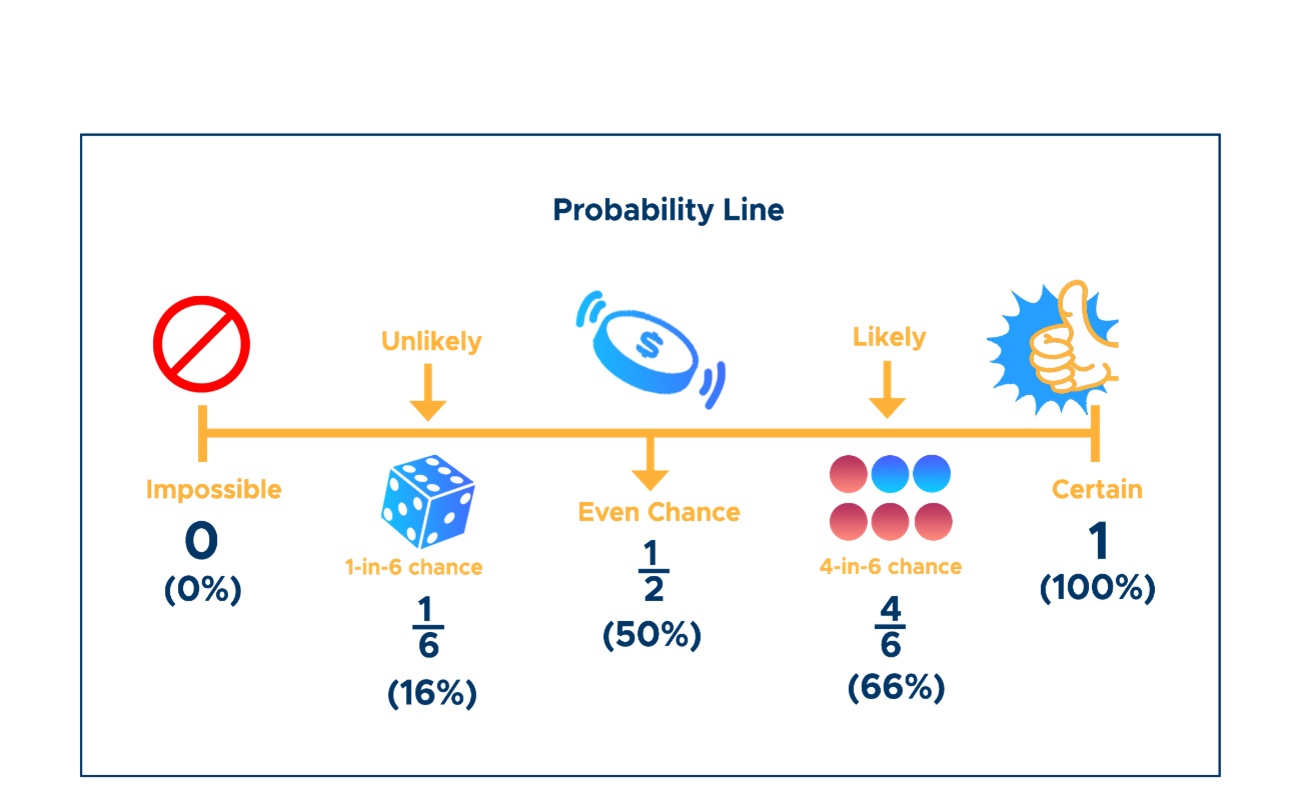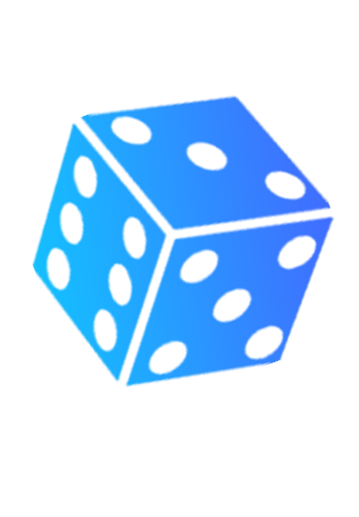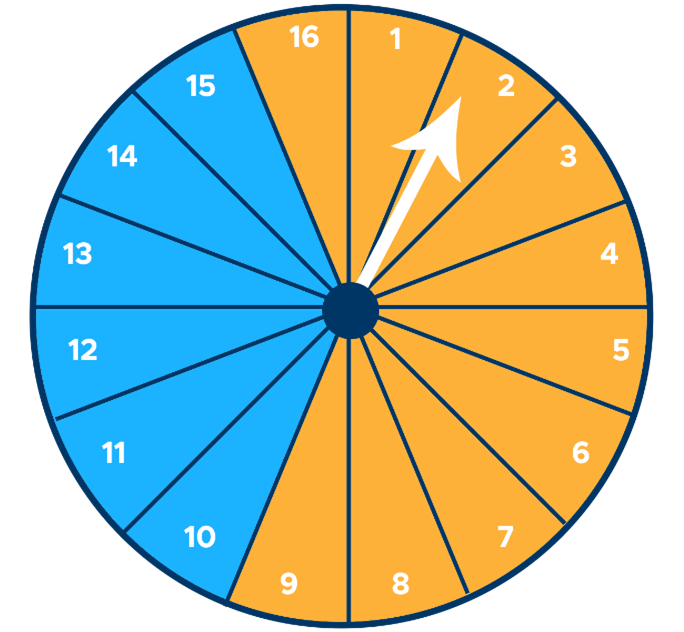Let’s learn about basic probability.
What is Probability?
Probability is the likelihood of something to happen. It ranges between zero (0) or impossible to one (1) or certain and will never be less than 0 or more than 1.

Probability can be expressed in fraction, decimal, or percentage. For example, here are some probabilities:
- A pig talking is 0 or impossible.
- Rolling a 6 in a die is unlikely, which can be expressed in 1/6 or 16%.
- Flipping a coin heads up is an even chance, which is 1/2 or 50%.
- Getting 4 red marbles from a jar containing 6 marbles is likely, which is 4/6 or 66%.
- Getting any marble from a jar containing 6 is certain or 100%.

When we roll a die, there are six possible outcomes:
1, 2, 3, 4, 5, 6.
The probability of any of them turning up is 1/6 or 16%.

When we toss a coin, there are only two possible outcomes:
heads or tails.
The likelihood of getting tails is 1/2 or 50%.
The likelihood of getting heads is 1/2 or 50%.
How to Compute Probability
To compute the probability of an event, divide the number possible outcomes by the number of total outcomes. For example, rolling a 3 in a die is 1 possible outcome over 6 possible outcomes, which gives us 1/6.

Example #1: Marble Jar
What is the probability of getting 4 red marbles in a jar containing 6 marbles?

Solution for Example #1:
Step 1. Write the given numbers.
Red marbles = 4, Total marbles = 6
Step 2. Use the formula to compute the probability of getting red marbles. Therefore, let A be the event of getting red marbles.
P(A) = # of possible outcomes / # of total outcomes
Step 3. Substitute 4 for the number of possible outcomes and 6 for the number of total outcomes. Then perform the division.
P(A) = 4/6
Therefore, the probability of getting red marbles from the jar is 4/6 or 66%.
Let’s compute the likelihood of getting blue marbles (A) using the same formula. Note that the number of possible outcomes is 2.
P(A) = 2/6
Therefore, the probability of getting blue marbles from the jar is 2/6 or 33%.
Example #2: Spinning Wheel
What is the probability of spinning a blue in the wheel?

Solution for Example #2:
Step 1. Write the given numbers.
Blue parts = 6, Yellow parts = 10, Total colors = 16
Step 2. Use the formula to compute the probability of spinning a blue. Therefore, let A be the event of spinning a blue.
Note that the 6 blue parts are also our number of possible outcomes or the outcomes we want to get, while the number of total outcomes is the total number of colors in the wheel, which is 16.
P(A) = # of possible outcomes / # of total outcomes
Step 3. Substitute 6 for the number of possible outcomes and 16 for the number of total outcomes. Then perform the division.
P(A) = 6/16
Therefore, the probability of spinning a blue is 6/16 or 37.5%. If we check the probability line, this means unlikely.
Let’s try to compute the likelihood of spinning an orange. Substitute 10 for the number of possible outcomes and 16 for the number of total outcomes.
P(A) = 10/16
Therefore, the probability of spinning an orange is 10/16 or 62.5%. If we check the probability line, this means likely or more than half a chance.
Thank you for reading. We hope it’s effective! Always feel free to revisit this page if you ever have any questions about probability.
Check out some of our other blog posts or invest in your future with one of our self-study courses!



